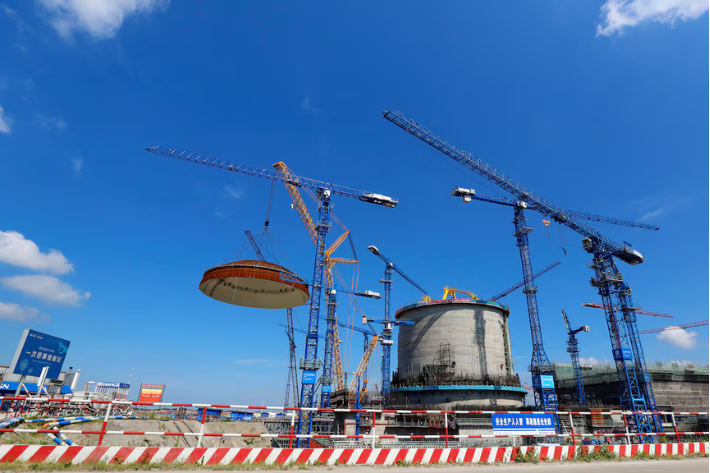China’s state planner announced on Thursday it will set standards for key metrics such as carbon removal and emissions accounting as part of latest efforts to meet its neutrality goals.
The National Development and Reform Commission (NDRC) said it would set standards for 70 areas, including carbon accounting, footprint, reduction, capture, utilisation and storage and energy consumption and efficiency.
The standards will apply to key industries including electricity, coal, steel, transport, building materials and petrochemicals, it said.
Also on AF: Bill Gates Backs Effort to Boost Credibility of Carbon Removal
The national planner set a year-end deadline for publishing the standards, adding that it will also standardise systems to undertake calculations and evaluations by the end of 2025.
The agency said it will also push top energy-consuming and carbon-emitting businesses to use emerging technologies such as 5G and blockchain to monitor, calculate and analyse their carbon footprint.
China is the world’s biggest emitter of greenhouse gases and has set ambitious targets to reduce its emissions, including hitting peak carbon levels by 2030 and becoming carbon neutral before 2060.
As part of its 14th-five-year plan — ending in 2025 — China has created record levels of solar and wind energy to reduce its reliance on coal, while also establishing its dominance in other clean technologies such as electric vehicles (EVs) and batteries.
Earlier this month, Beijing indicated that tackling carbon emissions would continue to be a major focus for the country in its 15th-five-year plan, whose end will coincide with China’s peak emissions deadline.
For the second-half of the decade, China hopes to focus on emissions intensity — the volume of greenhouse gasses emitted per unit of GDP. China’s cabinet has also vowed to make major industries and the country’s economic planners accountable for its carbon goals.
On Thursday, the state planner said its push to standardise aimed to help this plan.
Standards for accounting, removal, recycling
To set new standards, the state planner said it will look to accelerate research and revise existing standards for carbon emissions accounting. The move was aimed at developing the country’s emissions trading market, it said.
The NDRC also vowed to develop standards for the carbon footprint of trade-oriented technologies such as new energy vehicles (NEVs), photovoltaics and lithium batteries, as well as electronic appliances, plastics, and building materials.
Emission reduction accounting standards will also be set for energy efficiency improvement, renewable energy utilisation, surplus energy utilisation, and methane emission reduction and utilisation, it added.
The agency will also formulate carbon removal technology standards such as ecological carbon sinks and carbon capture, utilisation and storage, along with standards for their quantification and verification, it said.
It added it will also formulate recycling and disassembly standards for disposable tech such as automobiles, electronic products, household appliances.
Financial backing, international cooperation vow
While those plans are a step towards addressing the biggest challenges to China’s decarbonisation goals — like growing electricity demand or excess renewable energy flooding its grids — their effectiveness remains to be seen.
Historically China’s green transition has been hampered by systemic issues like corruption and increasing extreme weather events like floods caused by torrential downpours and relentless heatwaves.
But the NDRC is betting on meeting its goals through training, finance and international cooperation.
“Finance at all levels will increase”, the state planner said, adding it will “actively guide social capital investment” into the standardisation effort.
The NDRC also pledged to bank on international standardisation efforts, while also calling on greater Chinese participation in international measurement and standardisation organisations.
- Vishakha Saxena
Also read:
China, India Ask Rich Nations For ‘Trillions’ in Climate Finance
Climate Crisis Has Cost China Billions Already This Year
China to Set Emission Quotas for Industries, Economic Planners
China Turns to Carbon Capture, Biomass For Coal Power Emissions
Solar Overcapacity Kills Projects, Fuels Bankruptcies In China
China Building More Solar, Wind Than Rest of World Combined
State Funding Puts China ’15 Years Ahead of US’ in Nuclear Power
A Third of Carbon Credits Fail on New ‘High-Integrity’ Criteria
Methane Emissions Surge, Fuelling Climate Fears – Guardian
Zero-Carbon Breakthrough For Industry’s Dirty Businesses – NA
























